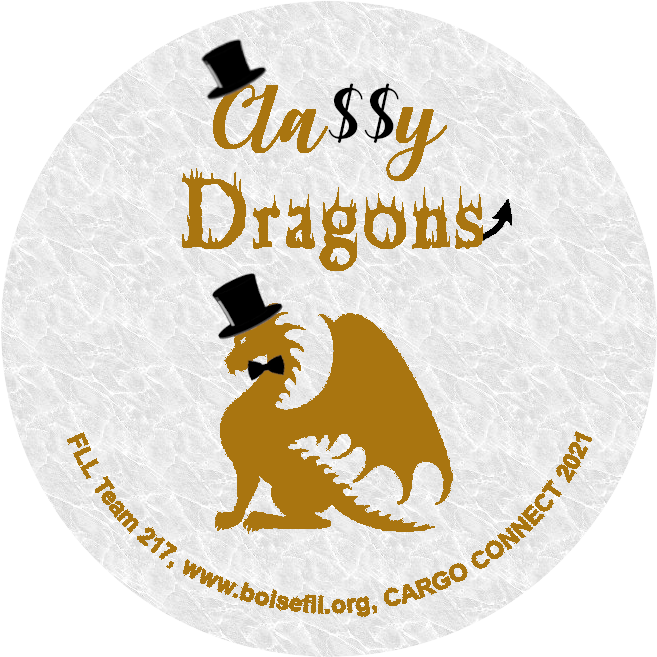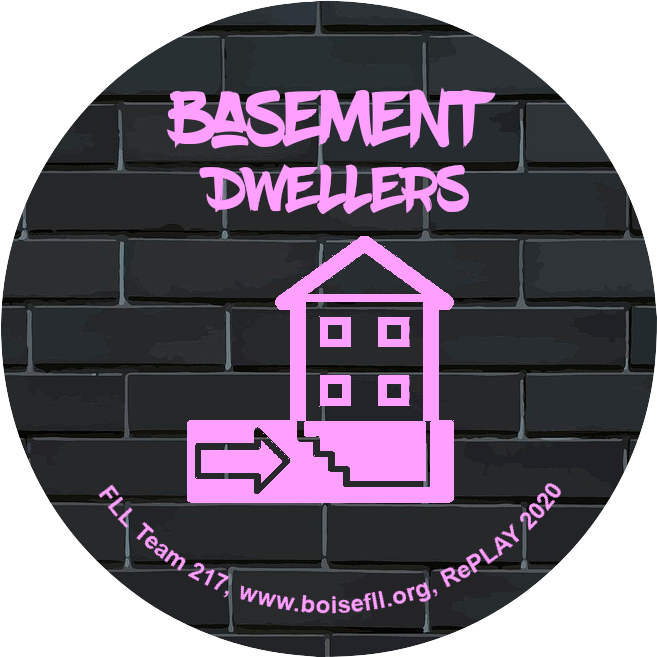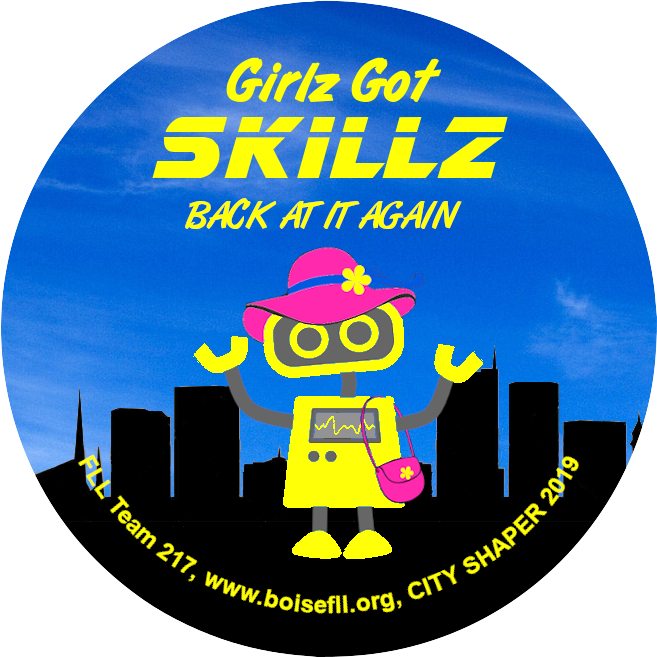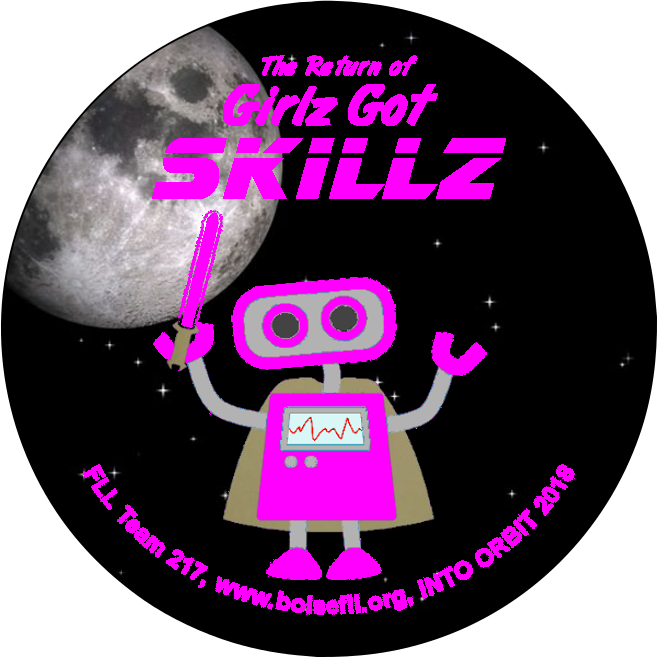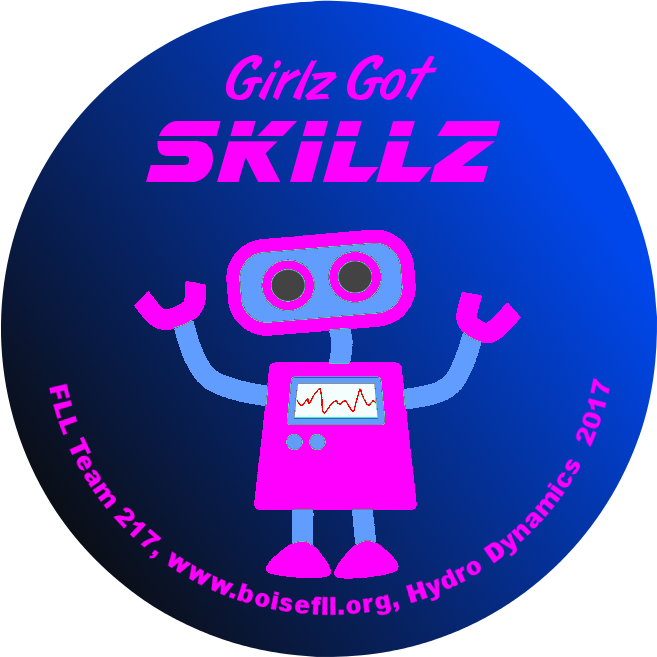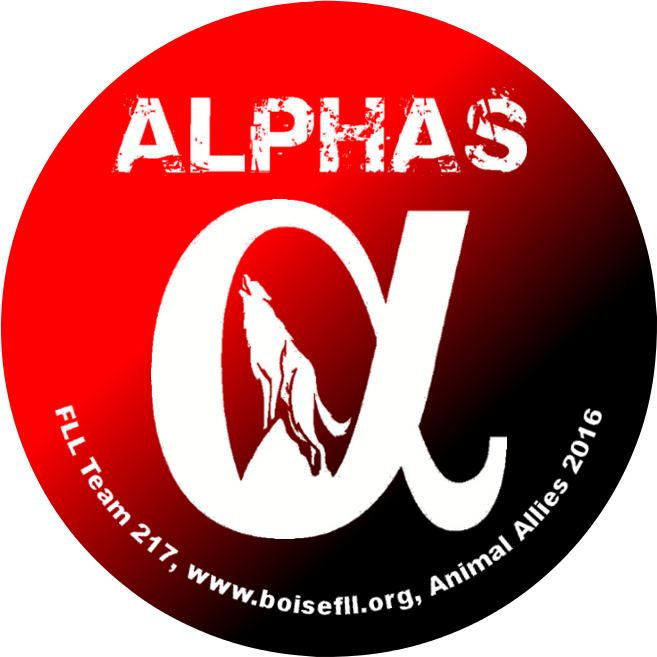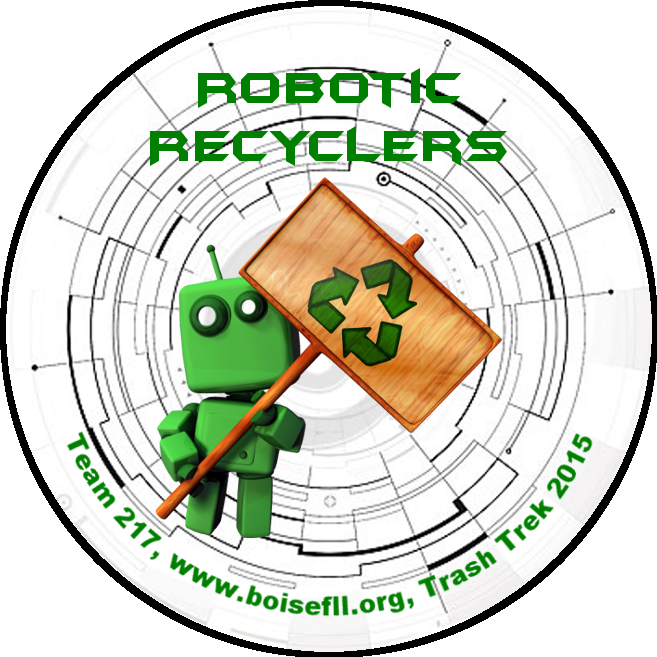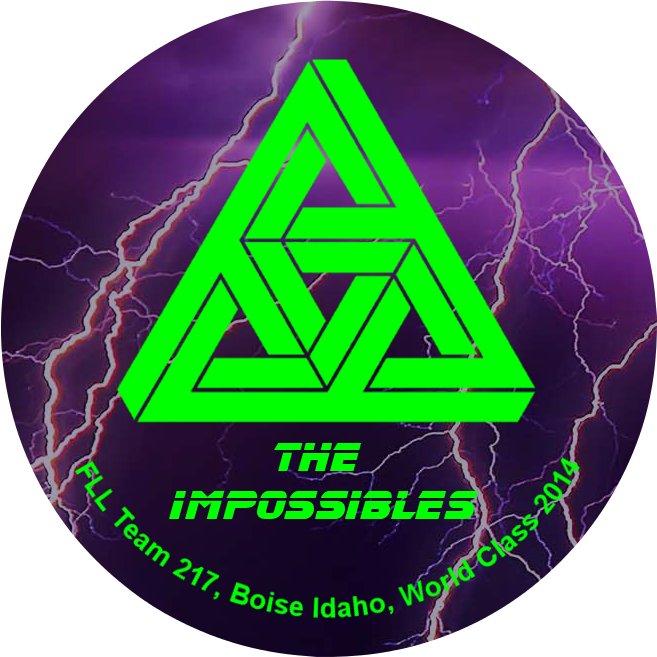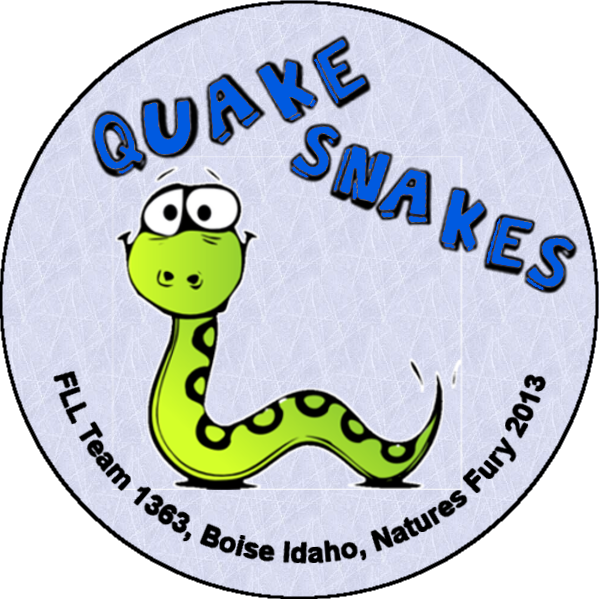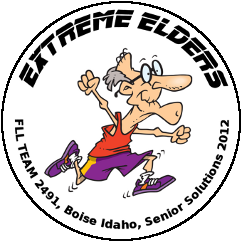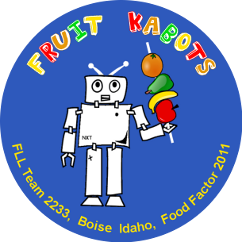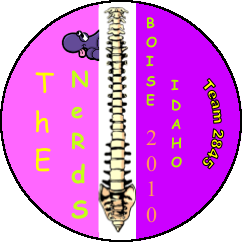What is FIRST / FLL?
FIRST stands for "For Inspiration and Recognition of Science and Technology." It was founded by Dean Kamen (inventor of the Segway) in 1989 with the mission of inspiring young people to be science and technology leaders. FIRST Robotic Competition (FRC) teams compete at the high school level.
You can learn more about FIRST here.
FLL stands for "FIRST Lego League." It is a partnership between FIRST and Lego and is open to kids age 9 to 14. The team goes through a fast-paced season from late August through regional competitions in December. During that time the challenge is released and the kids need to come up with a robot design using a Lego NTX (or EV3) "Brick" as a brain and various lego parts to solve the game missions. There is also a project portion that involves researching problems and existing solutions to the challenge theme and coming up with an innovative solution that improves an existing solution or is a unique, new solution.
Two important concepts of FLL are "Gracious Professionalism" and "Coopertition". Gracious Professionalism is about everyone improves each other while competing. Coopertition is about cooperating with others while competing with them. The topics are addressed in detail here.
The FLL teams meet with experts in the area of the challenge and spread the information learned to groups that can benefit. Some teams invent solutions that help specific people.
You can learn more about FLL here and here.
The 2013 team: Quake Snakes

What is Boise FIRST Lego League?
The Boise FIRST Lego League website was started by Coaches Lee Coulson and Mike Lydon to help spread the word about FLL in the Boise area. Coach Coulson has been mentoring FRC and coaching FLL teams since 2006, helping hundreds of kids learn more about robotics. He started an FLL team after his 7th grade daughter expressed interests in robotics at an FRC competition. Their first FLL team, The Super Smarties, consisted of nine girls who won the Idaho State Competition and competed in the World Championships in Atlanta, wining 2nd place for Teamwork.
Classy Dragons - Cargo Connect
This year the new additions were the younger sisters of a couple team members. They added a whole new dynamic with their enthusiasm and gave the older kids new kids to teach skills such as programming and building. A recent team member that aged out came back lead the team as a mentor. We won't mention names but her moniker was "Old Lady Katie". The kids really liked having her lead.

The project was to put solar cells on a train to provide power. The kids did all sorts of calculations to figure out how much power solar cells provide and how much power is needed to move the different transportaion vehicles: ships vs trains vs trucks. Trains were the best because of the surface area (boxcars) vs power needed to move. The robot did very well with a solid design and excellent programming.
State Championship robot run
Basement Dwellers - RePLAY
This season had the kids learning many new things. First was working through Covid. The team met over video for all the project meetings until we felt safe meeting in person. For the robot the team settled on using the Spike Prime and learned a new way to program the robot as well as dealing with early adoption issues.
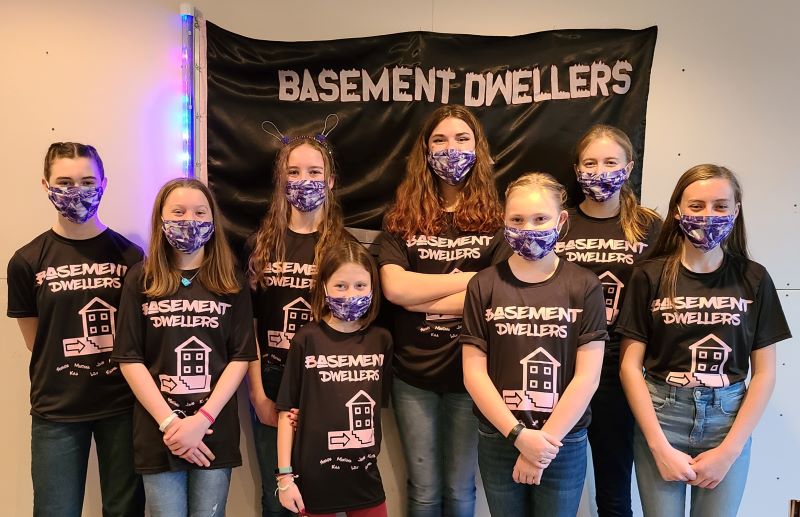
The project was to use augmented reality to create a game that gets people to exercise. The kids built an LED bracelet and created a video promoting the game. The video described the app and had a jungle scene and a lighning storm. The games premise was for whatever scene the bracelet would light up the user had to move. They learned video editing, game design, and soldering to build the bracelet.
Practice Round for Western Edge Invitational
Girlz Got Skillz, Back at it Again - City Shaper
Some Girlz moved on and some more Girlz joined the team. The robot took on a different shape to better match the challenges and the Girlz design a quick change feature for attachments that really shortened the time to swap attachments. Many of the Girlz showed up during the week as well as weekends and put hundreds of hours into designing, experimenting, coding, and improving on the robot and attachments. Along the way some of the Girlz took a CPR lesson, worked on building an electric motor, and helped some Boy Scouts with an Eagle project.
The project this year's team came up with involved using RFID (Radio Frequency Identification) to let a car know when it is approaching a stop sign. The idea is that sometimes stop signs are missing or obscured or the driver is distracted. The RFID reader is in the car (an add-on device for now, built in as it gets adopted by the industry) and it sends out a signal to the RFID tag that is buried in the road. When it senses the tag it lets the driver know. The Girlz did a lot of research into how RFID works, how long it takes a car to stop, and how fast a car can be going and still read an RFID tag. They even built a prototype using a LEGO RFID reader.
State Championship robot run
The Return of Girlz Got Skillz - Into Orbit
This year the team picked up some new Girlz and improved the robot but kept the same basic design. Different tires and size and attachments. What was amazing about this team is their drive and grit. They put many extra hours into designing, building, programming, and re-designing, and had many great ideas they put into the robot. It was fun to just sit back and watch them work.
We thought the previous year's challenge was difficult because it had already been studied for so long. It turns out this year's was more difficult because no one has been on a long-duration space mission outside of earth's orbit. The team finally came up with a very novel idea - add scent technology to 360-degree video to help space explorers reduce the effects of isolation during long-duration space travel. The idea is to have a helmet that plays the video and the maker of the video will signify what smell to release at what point of the video. A new technology will be used that makes a smell from a reservoir of scent chemicals - like how inkjet printers can make a variety of colors from four basic colors.
State Championship robot run 3
Girlz Got Skillz - Hydro Dynamics
This year became an all girl team. They came up with a brilliant idea to have a single, simple base with just a couple of motors and gears. Then a variety of attachment were built to solve different challenges, but could be swapped out quickly between runs.
The challenge this year was to solve a problem with the collection, distribution, or use of water in the human water cycle. You would think this would be easy but it turns out water has been studied and problems solved for centuries so it was very hard to find a unique problem to solve. The Girlz finally found one - have a temperature sensor on the end of the shower to know exactly when the water stopped heating up so minimal water was wasted before getting into the shower. Basically it sensed when the hot water started coming out after pushing all the cold water out of the pipe.
Girlz Got Skillz Project
Alphas - Animal Allies
This year many of the last team's members got involved with other sports so it is essentially a brand new team. Lots of opportunities for the new kids to learn new skills. The missions are all related to how people and animals interact and the touch penalties are poop disks. Fun stuff! The robot just keeps getting bigger and bigger. The team is trying to minimize attachments and keeps adding things to the robot. They are experimenting with using advanced sub-routines to do more with the programming. The South Idaho competition is in a week!
The project goal is to make an interaction between an animal and humans better for the animal, human, or both. After researching several ideas the team decided to apply some existing technology in an exciting new way. The idea is to place a 360° camera in the wild and broadcast the image into a zoo so the zoo's customers can experience an animal in its native habitat. The team chose the forest elephant in Gabon - a "glamorous" animal that is difficult to transport and care for and is very beneficial to its native habitat. The camera would be be placed in the jungle and have enough storage for a month's worth of video and solar panels and batteries to power the camera. Someone would swap out the storage monthly, edit, and send the video to the zoos. The zoos would broadcast the video over WiFi and patrons would use their own device. The patron's visit to the zoo would be enhanced and the elephant would get to stay in its native habitat. As a bonus, the zoo wouldn't need to have an elephant exhibit - a costly proposition that isn't beneficial to the elephant.

The team demonstrating their robot at BSU Engineering & Science Festival
Alphas presenting their project
Robotic Recyclers - Trash Trek
This year's robot design took the minimalist approach. The game board had a lot of missions that involved re-using or recycling things and nothing was really too complex. The first mission the kids worked on called for a simple, square robot that could move around. An arm was attached to do a couple of things. That arm ended up being the key component and contributed to the majority of the points. The attachment that helped knock down the structure re-used parts from the prior year's robot, so it fit the theme. The attachment to feed the hopper/sorter with the knocked down parts was really cool but only one run in competition went well enough to get to that mission.
This year's project theme dealt with recycling or reducing amount of garbage going to landfills. This theme had some good real-world potential. The team's original idea was to re-purpose cardboard pizza boxes into a "Presto Log" ® type of product. Mmmm, pizza-smelling campouts. After visiting the recycling center it turns out that cardboard pizza boxes in the recycling bins wasn't really a big problem. The big problem was plastic grocery bags getting put into the recycling bins. Those bags would jam up the sorting machine and sorting would have to stop while the bag was removed, or worse, the component that broke because of the jam needed to be replaced.
The team came up with an idea that involved building a product that attached to a recycling bin. When the lid was opened a voice told the person that grocery bags should be recycled at the grocery store not in the recycle bin (grocery stores can handle the HDPE-type of plastic). The product had a solar panel to re-charge. With the help of a 3-D printer the kids made an actual working prototype.

Team's best run at the South Idaho Championship.
The Impossibles - World Class
After trying out several robot solutions the team settled on a solution that was simple yet elegant. It only had a few attachments which allows it to spend a longer time out on the game mat scoring points. The downside is that if there is a problem then there is a bigger chance to lose items that were collected! The kids really had fun with the soccer ball mission as well as coming up with the simplest strategy for each mission. One team member learned how to do data logging to help measure the accuracy of the gyroscope in being able to travel in a straight line.
This year for the project teams answered the question: "How could we improve the way that someone learns _____? The Impossible's chose "History" as their topic came up with an innovative idea to use Virtual Reality as a way to teach history. Using VR the student enters a three-dimensional environment where they can interact with historical characters and an artificial intelligence answers student questions and makes sure the curriculum is covered. The student now can learn in the best way possible - using a combination of auditory, visual and kinesthetic learning to get an enriched learning experience. The student can interact with the lesson with virtual reality, too. What is really cool is that this technology can be used for any subject in school where learning is mostly from books.

The team's best run of the season happened at the Treasure Valley #2 qualifier.
Quake Snakes - Nature's Fury
The Quake Snakes took an almost scientific approach to designing their robot. First, they voted to use the new EV3 robot for this competition, even though it was a brand new "brain". Some parts were on back order but showed up in time for the regional competition. They also spent some time determining which wheels were best for the different missions. There was a need for moving fast across the game mat, but also being able to climb over obstacles. They ended up with a middle size, wide wheel for the mat so it would have more friction than a narrow wheel to reduce slippage, and it would be big enough to move fast but not too big to stall at slow speeds. Finally, they tried different body sizes to see what could move around the game board but also not be too tall because of the airplane "zip line". They also came up with a unique attachment, "The Hulk" that had its own motor and treads to get over the obstacles.
The Quake Snakes' project was a robotic snake that could be used to go through rubble after an earthquake, squeezing through small areas and using sensors to find people. It uses a video camera with heat sensors for navigation and the controller uses a cell phone signal to communicate. The snake uses biomimicry by using treads instead of scales to move with rectilinear, or straight, movement.

The team's best run of the season, and incidentally, the best robot performance run of the North American Open.
Extreme Elders - Senior Solutions
The Elders took a strategic approach to have a different set of attachments for different sets of missions. They also used the new pneumatic Lego part and a tag-team approach to running the robot in competition.
The Elders' project was a website design that helped seniors stay fit. There were sections for mental games, physical exercises, nutrition, music, and travel. The travel section showed video clips so the seniors can see and experience new things without leaving their home. The travel section was accessed with points earned by completing requirements in the other sections.

Fruit Kabots - Food Factor
This year's team came up with some innovative solutions to a whole new set of missions. A lot of new team members learned all about designing and programming robots.
The Fruit Kabots' project addressed food safety with a "refrigerated bowl" to help keep fruit fresh longer.
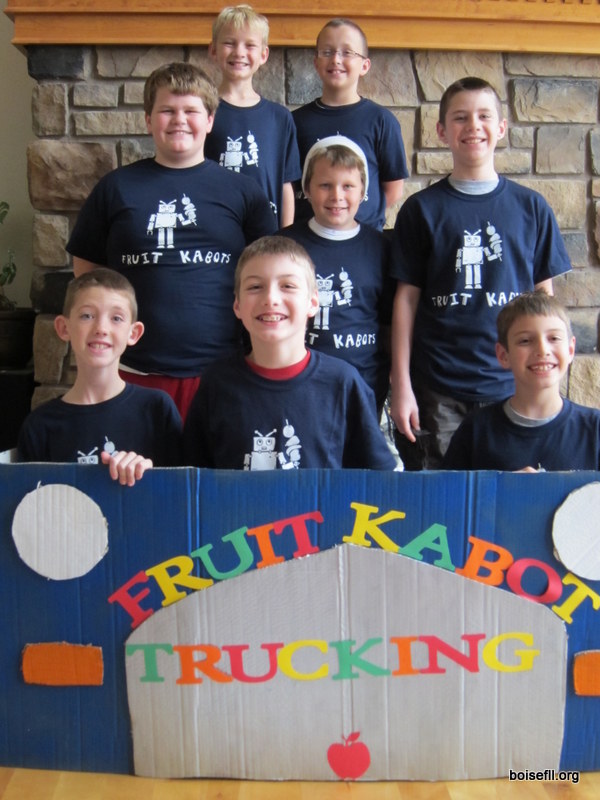
The Nerds - Body Forward
The team returned in 2010 with the Body Forward competition. A new set of missions and a new robot. Challenge accepted! The team did well enough to compete in the Southern California Invitational at Legoland.
After meeting with a couple experts on biomedical engineering to discuss problems facing the human body. The Nerds came up with a project addressing siting with good posture. After meeting with a physical therapist the Nerds designed a "People's Perfect Posturefier" that used an NXT robot brain and a sculptured foam pad to help give feedback to the person using it if they had incorrect posture.

The team created a video summarizing their experiences and promoting FLL
Super Smarties - Smart Move
The Super Smarties surprised many people with their robot and project. The robot was a robust solution that solved many of the missions. However the robot performed very poorly during the regional qualifying competition. In a supreme example of Gracious Professionalism and Coopertition another FLL team showed the Super Smarties how to calibrate their light sensors. Calibrating the sensors is important because it allows the robot to know the sensor values for true black and true white, based on the available light - an important concept when the robot is running in a new environment (e.g. a competition instead of at home). The Super Smarties went on to win the regional competition. With some more programming they also won the Idaho State Competition and were able to travel to the World Festival in Atlanta Georgia. A big thanks to all who helped get them there!
The Super Smarties' project was about converting garbage into gasoline.

Here is how Boise FLL helps
Boisefll exhibit their robots at many area events such as Boise State University's STEM/Engineering Day.
- Creating awareness of FLL and robotics
- Inspire new teams
- Show what sort of problems can be solved with robots
